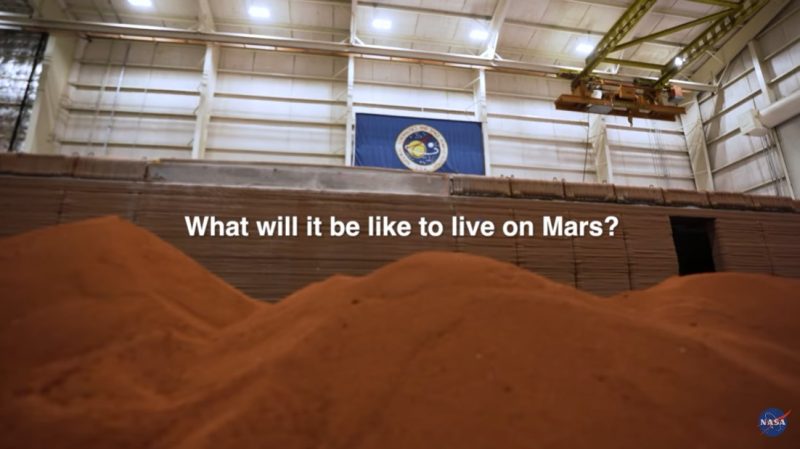On April 11, 2023, NASA unveiled its simulation of a Mars habitat where four volunteers will train on Earth before humankind’s first steps on the red planet. In fact, the simulation is the first of three planned habitat simulations. What’s more, this first habitat has been constructed via 3D printing. In June, the four volunteers will enter the habitat, which is located at Johnson Space Center in Houston. And they’ll stay there – isolated from the outside world – for one year.
During that time, the volunteers will test out the technology, even as they themselves are tested.
The Mars-surface simulation is part of NASA’s program named Crew Health and Performance Exploration Analog (CHAPEA). It’s an experiment to test human preparedness for visiting the red planet. Currently, the Artemis mission is working on returning humans to the moon.
And NASA plans to use that technology to eventually send humans a step further … to Mars. NASA’s stated goal for the Artemis missions is to:
… establish a sustainable presence on the moon to prepare for human missions to Mars.
But are humans ready to go to Mars?

Mars habitat simulation is a test
The four volunteers are not astronauts. But they’ll be trained to simulate situations that might occur on Mars, such as habitat maintenance, robotic operations and ‘Marswalks’. Some of the ‘Marswalks’ – or spacewalks on Mars – will involve geology, building and exploration.
Additionally, the crew will also face realistic stressful situations, which include resource limitations and equipment failure. For example, they will have to manage with a limited amount of water as they grown their own vegetables and tackle personal hygiene.
In addition, the volunteers will have to endure isolation and confinement during their year in CHAPEA. Meanwhile, scientists will be monitoring their mental health and the social dynamics of the foursome.
Habitat construction
In the video below, you can see the giant 3D printer as it assembles the habitat.
Bottom line: On April 11, 2023, NASA unveiled its Mars habitat where four volunteers will spend a year. This is a trial for astronauts who may visit Mars in the future.











